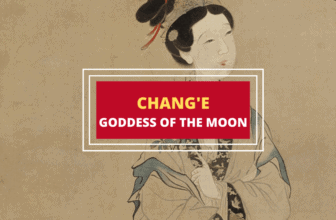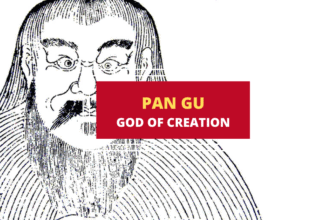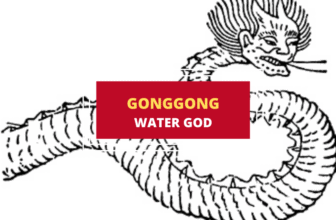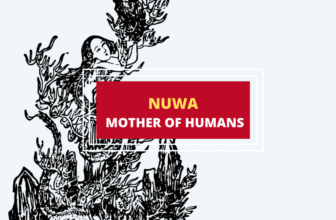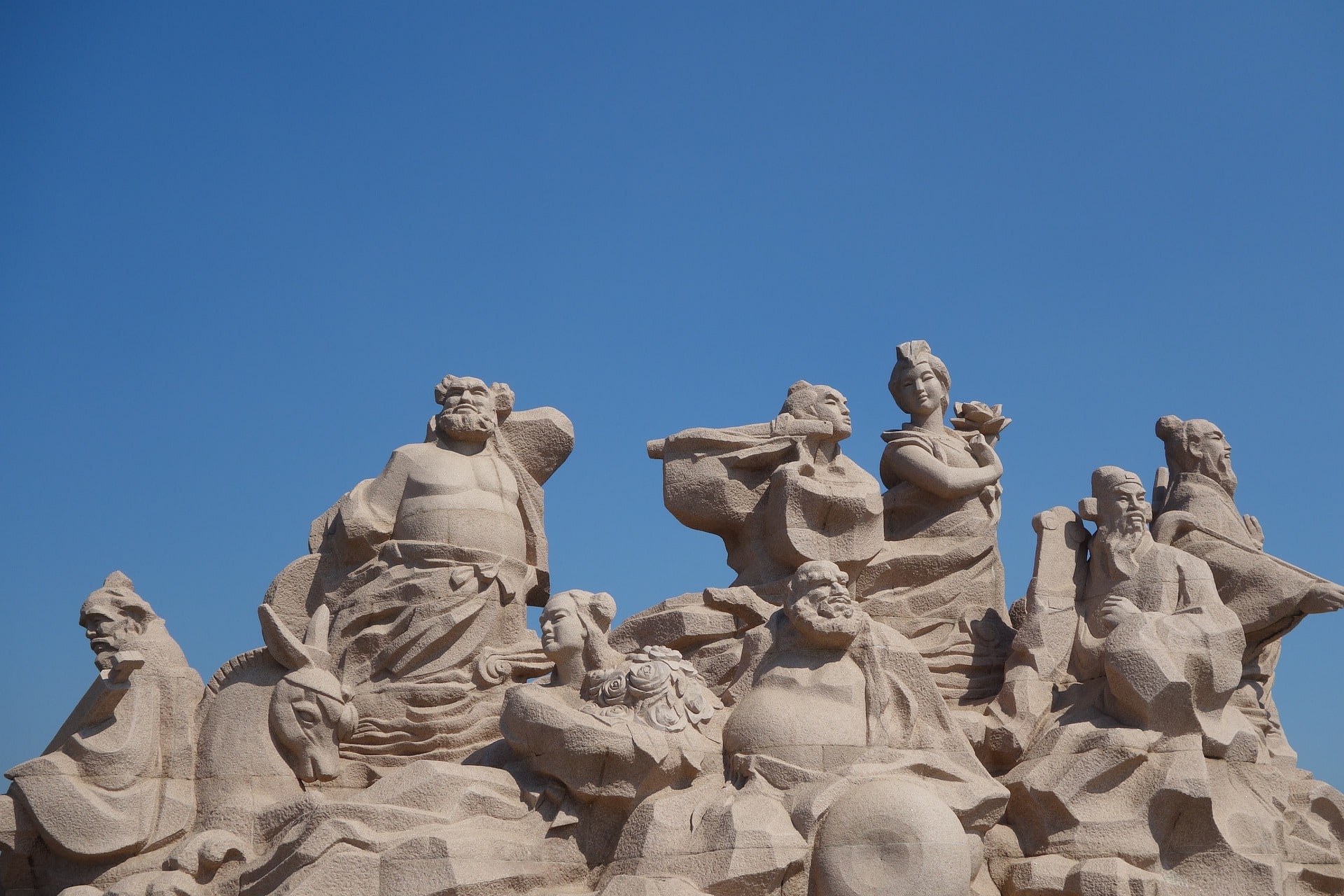
Table of Contents
In Chinese and Taoist folklore, the Eight Immortals, or Bā Xiān, have an important role to play as the legendary immortal heroes of justice, who are always fighting to vanquish evil and bring peace to the world.
They are called Bā Xiān in Chinese which consists of the Chinese character that represents ‘eight’ and literally translates to ‘immortals’, ‘celestial being’ or even ‘the Eight Genies’.
Although they all started off as mortal humans and are not exactly Gods, they achieved immortality and ascended to Heaven due to their devout behavior, integrity, bravery, and piety. In the process they are bestowed with divine powers and supernatural attributes.
It is believed that these Eight Immortals live on Mount Penglai, a group of five paradisical islands in the middle of the Bohai Sea, where only they have access.
These Immortals not only know all the secrets of nature but they also each represent the female, the male, the rich, the poor, the noble, the humble, the old, and the young Chinese.
Origin of the Eight Immortals
The stories of these immortal beings have been part of the oral history of China for a long time until they were recorded for the first time by the Poet Wu Yuantai of the Ming Dynasty, who wrote the famous ‘The Emergence of the Eight Immortals and their Travels to the East’.
Other anonymous writers of the Ming Dynasty also wrote stories of their adventures such as ‘The Eight Immortals Cross the Sea’ and ‘The Banquet of Immortals’.
These folk tales elaborate on the powers of these immortals which included the ability to transform into different creatures and things, bodies that never aged, ability to perform extraordinary feats, the control of Qi, the ability to predict the future, and the ability to heal.
Who Are the Eight Immortals?
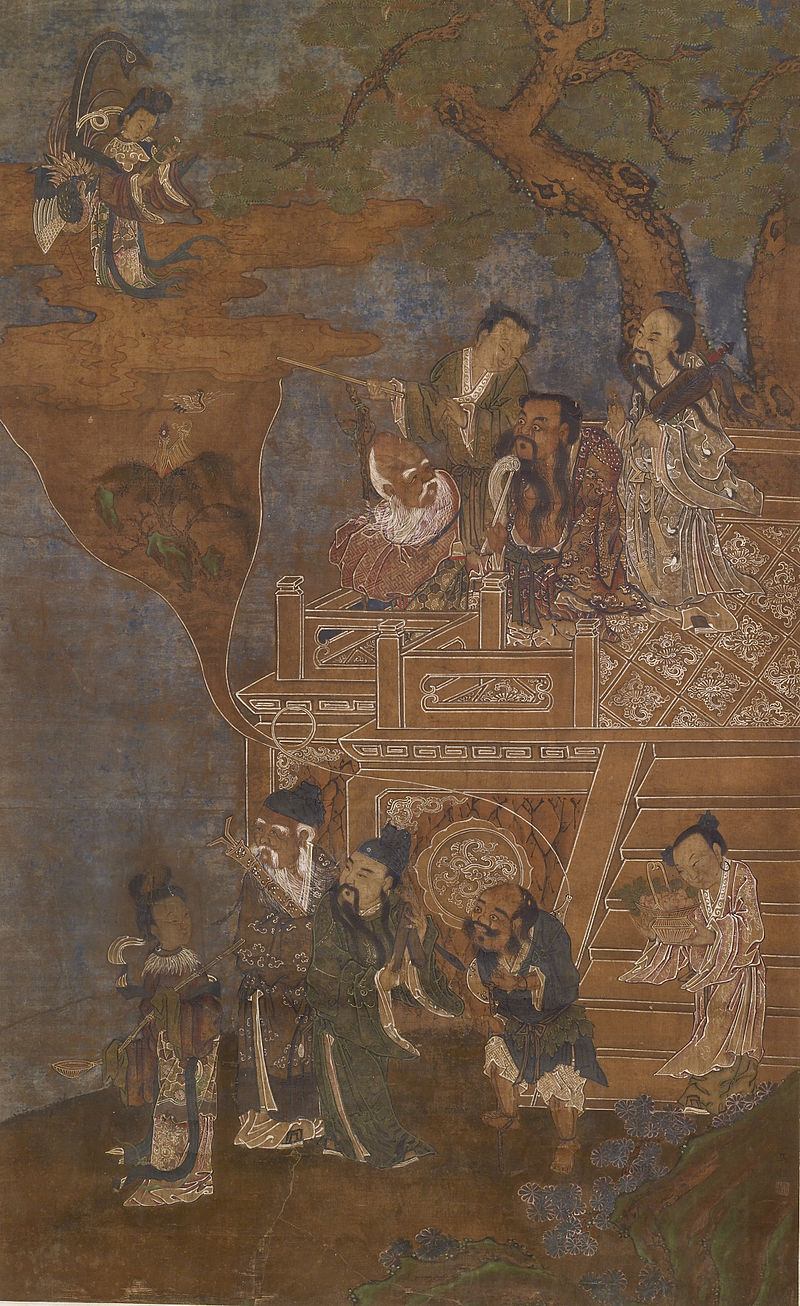
1. Lü Dongbin
As the chief leader of the Eight Immortals, Lu Dongbin is also known to be an elegant scholar of the 8th century. When he was born, the room is believed to have been filled magically with a sweet fragrance.
Dongbin is known to be highly intelligent with a great desire to help others attain spiritual growth. If he had a character flaw, it would be his tendencies of being a womanizer, drunkenness, and his bouts of anger.
It is said that Dongbin learned the secrets of Taoism from Zhongli Quan after proving himself by undergoing ten trials. He developed the methods taught to him and made many contributions for the wellbeing and spiritual growth of all mankind.
Lu Dongbin is typically represented as wearing scholar’s robes with a large sword and holding a brush. With his sword he fought dragons and other evils. He is the patron deity of barbers.
2. He Xian Gu
He Xian Gu is the only female immortal within the group and is also known as the immortal maid. She is said to have been born with exactly six hairs on her head. When she received a divine vision to change her diet to only powdered mica or mother of pearl every day, she followed through and also vowed to remain a virgin. Due to this, she attained immortality and ascended to heaven.
He Xian Gu is usually symbolized by a lotus and her favorite tool is the ladle that bestows wisdom, purity, and meditation. Her lotus has the ability to improve mental and physical health. In most of her depictions, she is seen holding the musical reed pipe, sheng. She is accompanied by Fenghuang or the Chinese phoenix, the mythical immortal bird that brings blessings, peace, and prosperity.
3. Cao Gou Jiu
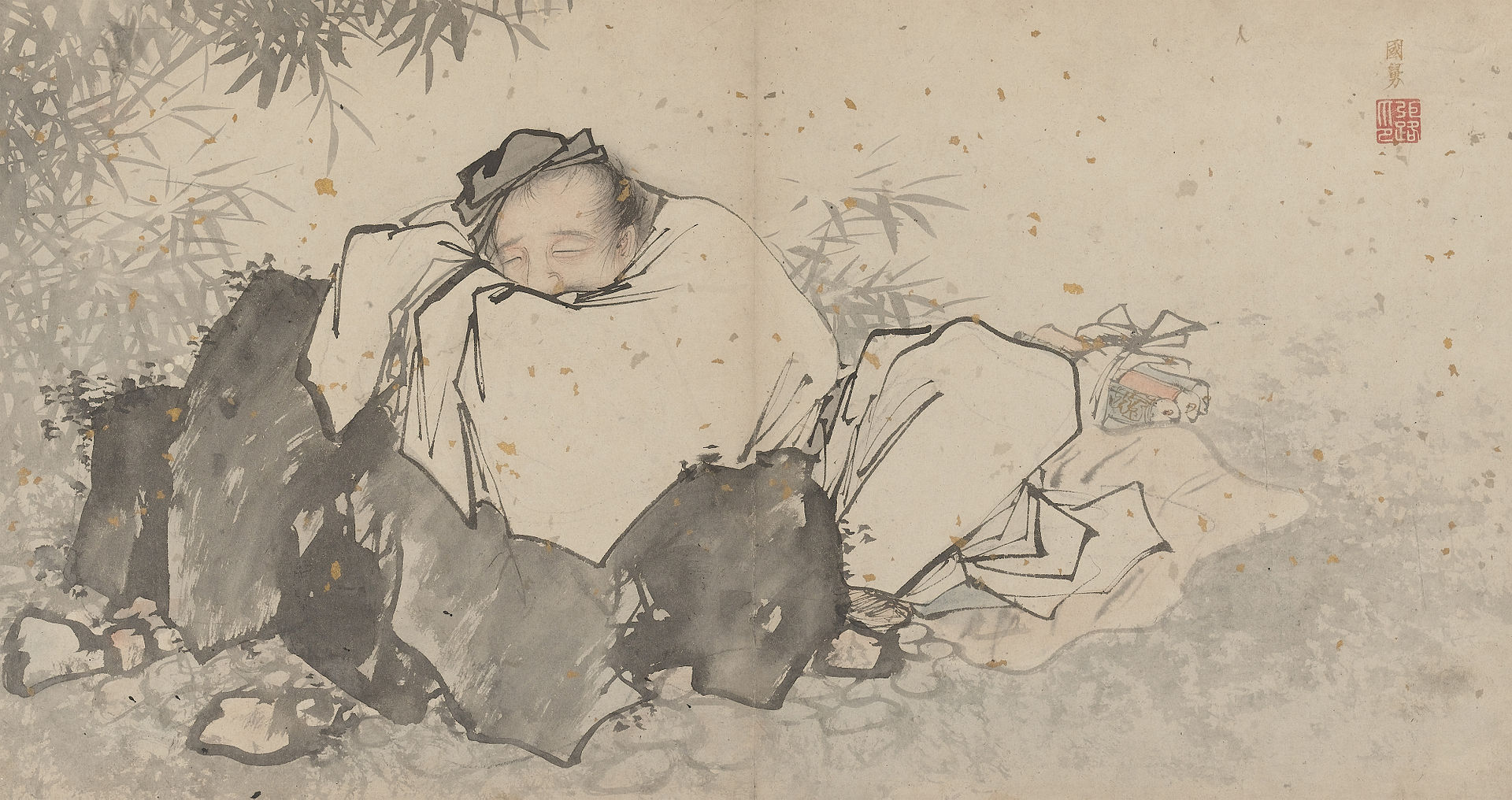
Endearingly known as the Royal Uncle Cao, Cao Gou Jiu has the reputation of being the noble brother of the Song Empress of the 10th Century and the son of a military commander.
According to the legends, his younger brother Cao Jingzhi took advantage of his rank, gambled, and bullied the weak. No one could stop him even when he killed someone because of his powerful connections. This made Cao Gou Jiu very frustrated and filled him with sadness, he tried to pay off his brother’s gambling debts but failed to reform his brother, which led him to resign from his office. He left his home to go to the countryside and learn Taoism. While living in solitude, he met Zhongli Quan and Lü Dongbin who taught him Taoist principle and magical arts.
Cao Gou Jiu is often depicted wearing luxurious, formal court dress with castanets, befitting his rank which gave him free access into the royal palace. He is also seen holding a jade tablet which had the ability to purify air. He is the patron saint of actors and theater.
4. Li Tie Guai
Legend has it that being very proficient in magic and a great magician, Li Tie Guai was a good-looking man, who learned the ability to separate his soul from his body and visit the celestial realm from Lao-Tzu, the founder of Taoism. He used this skill often and once when he lost track of time, leaving his body for six days. His wife thought he was dead and cremated his body.
Upon his return, unable to find his body, he had no choice but to inhabit the body of a dying lame beggar. Due to this, he is represented as a lame beggar who carries a double gourd and walks with an iron crutch. It is said that he carries around medicine in his gourd that can cure any illness.
The gourd is said to have the ability to ward off evil and symbolizes helping the distressed and the needy. Clouds emerging from the double gourd represents the soul with its formless shape. He is often pictured as riding a qilin, a mythical Chinese hooved chimerical creature composed of different animals. He is seen as the champion of the sick.
5. Lan Caihe
Described as an intersex person, Lan Caihe is known as the Immortal Hermaphrodite or the eternal teenager. They are said to have wandered as a beggar on the streets with a basket of flowers or fruits. These flowers represent the transience of life, and they could also communicate with the gods using them.
It is said that Lan Caihe attained immortality when they got very drunk one day and left the mortal world to go to heaven riding atop a crane. Other sources say that they became immortal when the legendary Monkey King, Sun Wukong, transferred magic worth five hundred years.
Legends say they went around the streets singing songs of how brief the mortal life was. They are often portrayed wearing a tattered blue gown and one shoe on their feet. They are the patron saint of florists.
6. Han Xiang Zi
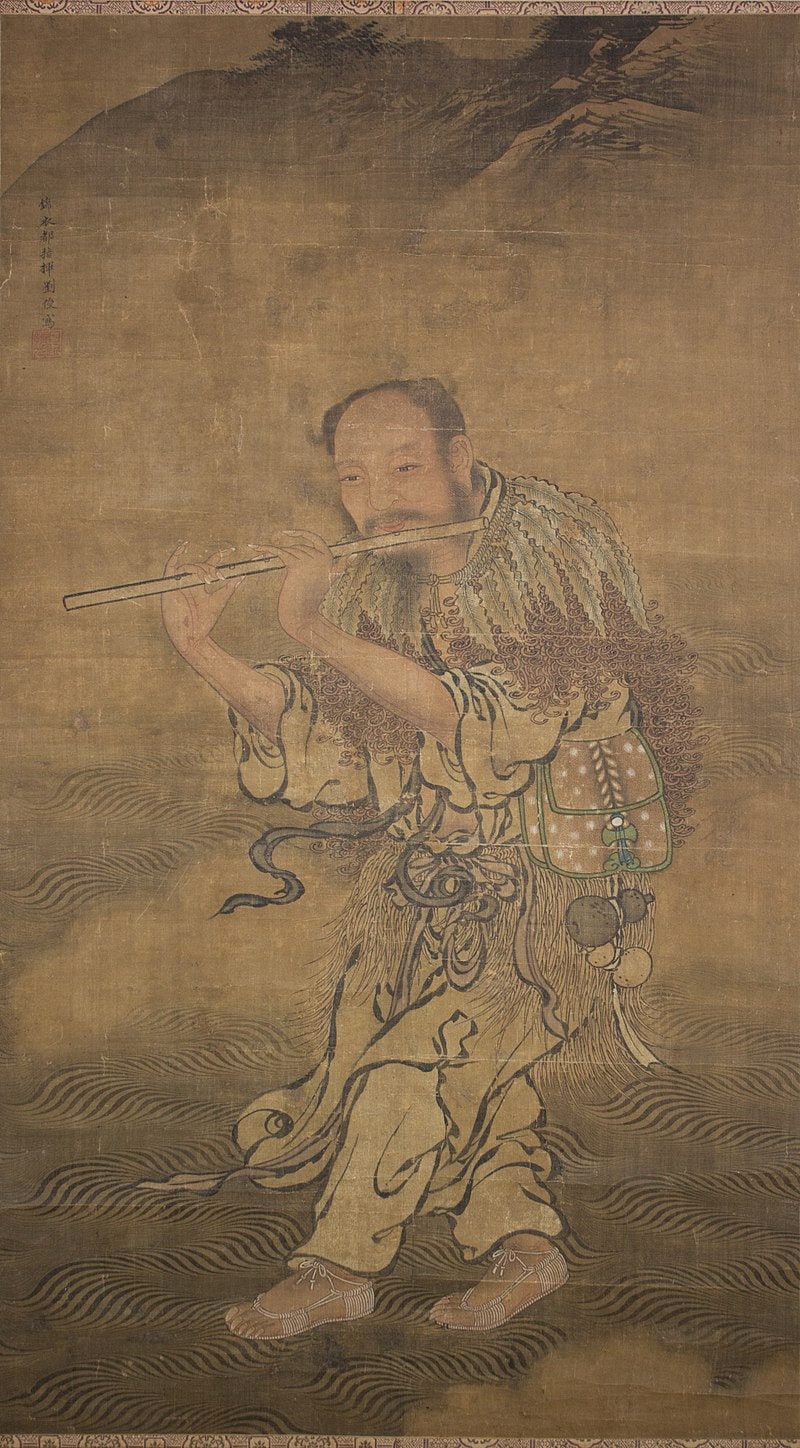
Han Xiang Zi is known as the philosopher amongst the Eight Immortals. He had the special skill to make flowers bloom and soothe wild animals. It is said that he was enrolled into a Confucian school to become an official by his grand uncle, the prominent poet and politician, Han Yu. But being uninterested, he developed his ability to bloom flowers and was taught Taoism by Lü Dongbin and Zhongli Quan.
Han Xiang Zi is portrayed as a happy man and is always seen carrying a Dizi, a Chinese magical flute that has the power to make things grow. He is the patron of all musicians. He is known to be a musical prodigy himself.
7. Zhang Guo Lao
Zhang Guo Lao is known as the ancient man, who traveled the lands with his magical white paper mule which could walk very long distances and shrunk into a wallet after the journey. It would come back to life whenever its master sprinkled it with some water.
During his life as a mortal, Zhang Guo Lao was a hermit known to be quite eccentric and an occultist who practiced necromancy. He snatched birds with his bare hands and drank water from poisonous flowers. It is said that he died when he visited the temple and his body even decomposed rapidly but mysteriously, he was seen alive on a nearby mountain a few days later.
Zhang Guo Lao is usually portrayed as an old man riding a mule backwards, holding a fish drum made of bamboo, mallets, and a peach of immortality. The drum is said to cure any life-threatening diseases. He is the symbol of old men.
8. Zhongli Quan
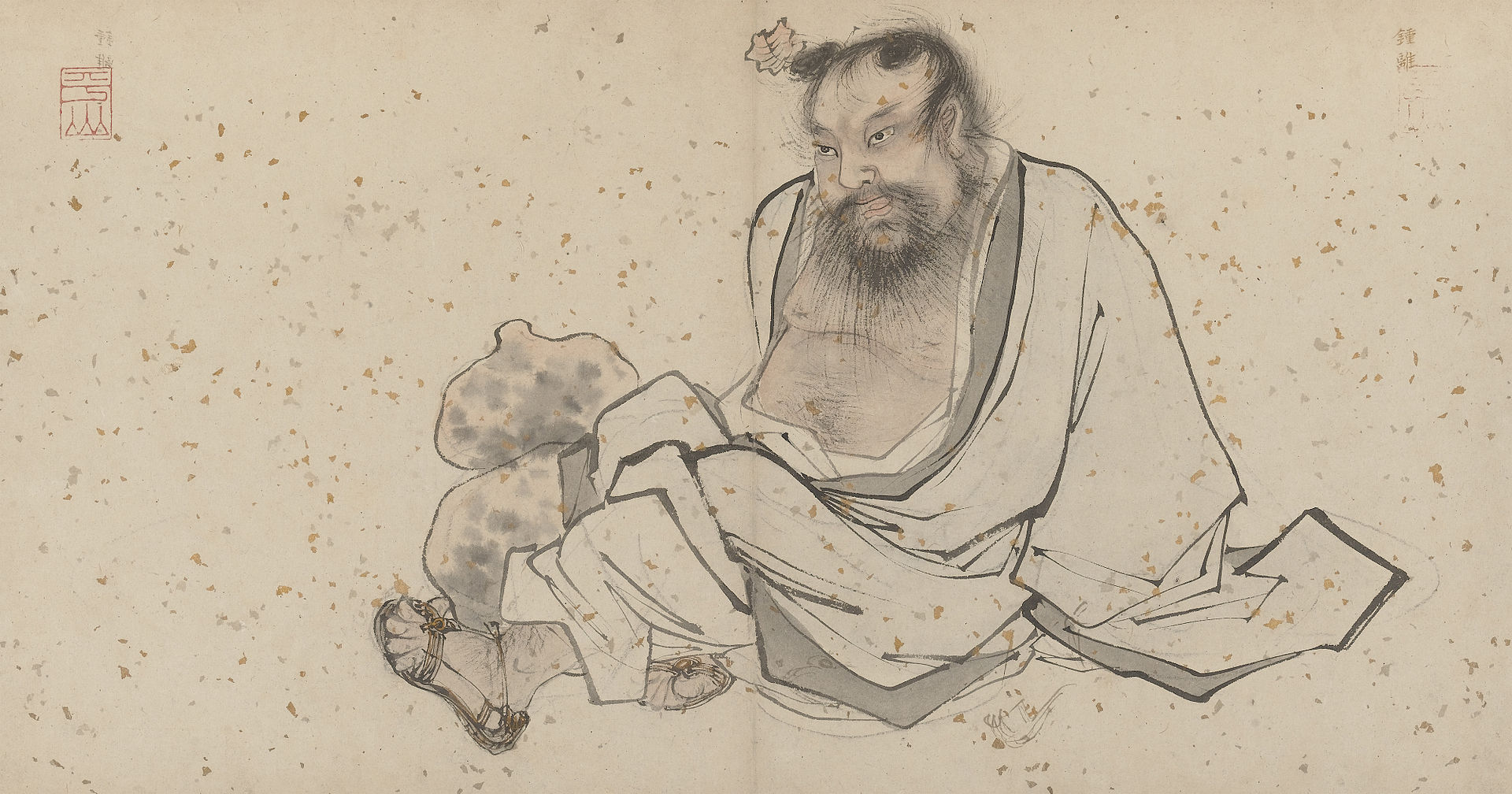
Known as the defeated warrior, legend has it that Zhongli Quan was an alchemist from the Zhou dynasty who had the power of transmutation and knew the secret elixir of life. He is the oldest amongst the Immortals. It is believed that he was born from his mother’s body in a shower of lights and an ability to speak already.
Zhongli Quan learned Taoism from Tibet, when his military expenditures as a general of the Han Dynasty led him there and he devoted himself to meditation. It is said that he ascended to heaven while meditating by materializing into a cloud of gold dust. While other sources say that he became immortal when a wall fell on him while meditating and behind the wall was a vessel of jade that turned him into a shimmering cloud.
Zhongli Quan is often depicted as a fat man with his belly showing and carrying a huge fan which could bring back the dead to life. It could even turn stones into gold or silver. He used his fan to alleviate poverty and hunger in the world.
The Hidden Eight Immortals
Just as how these Immortals had their own divine powers, they used special talismans known as the Hidden Eight Immortals that not only had unique abilities but had certain meanings.
- The sword of Lü Dongbin subdues all evil
- Zhang Guo Lao had a drum that could augur life
- Han Xiang Zi could cause growth with his flute
- He Xiangu’s lotus had the ability to cultivate people through meditation
- Cao Guo Jiu’s jade board purified the environment
- Lan Caihe used their basket of flowers to communicate with the heavenly gods
- Li Tie Guai had gourds that relived the distressed, cured the sick and helped the needy
- Zhongli Quan’s fan could bring the dead back to life.
Popular Culture Based on the Immortal Eight
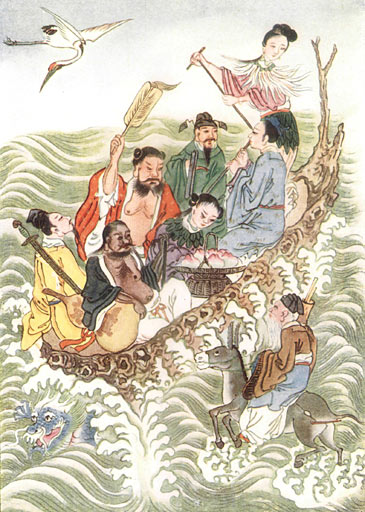
The Eight Immortals are admired by so many that they have been depicted often in Chinese art and literature. Their characteristic attributes are now symbolized and depicted in various objects such as embroideries, porcelain, and ivory. Many prominent painters have made paintings of them, and they are also depicted in temple murals, theatre costumes and so on.
These mythical personalities are the most recognizable and used characters in Chinese culture and they are also portrayed as main characters in TV shows and films. Though not worshipped as gods, they are still famous icons and many of the modern movies and shows are based on their exploits and adventures. These characters are a source of devotion, inspiration, or entertainment for many.
Due to their long lives, the art in which they are depicted is usually associated with banquets and birthday celebrations and in many religious contexts as they are often portrayed as Daoists learning the Way of Daoism. Their stories and legends have also been converted into children’s books, illustrated with many graphics depicting the Eight.
Many Chinese proverbs have also originated from the tales of the Eight Immortals. A famous one is ‘The Eight Immortals Cross the Sea; Each Reveal Their Divine Power’ which means that when in a tough situation, everybody should utilize their unique skills to achieve a common goal. The story goes that on their way to the Conference of the Magical Peach, the Eight Immortals came across an ocean and rather than crossing it by flying on their clouds, the mode of transport, they decided to each use their unique divine powers to cross the sea together.
Wrapping Up
The Eight Immortals are still popular figures in Taoism and Chinese culture not only due to their association with longevity and prosperity but because they were the beloved heroes of the masses, curing them of diseases, fighting against oppression of the weak and even helping people attain spirituality. Though a mix of reality and mythology, they continue to be important in the hearts of the Chinese society.




